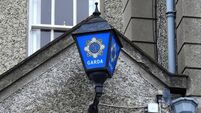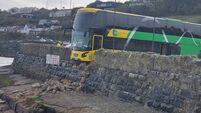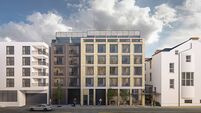Iconic Ford plant to become protected structure
Cork’s city manager Joe Gavin has prepared a report for councillors tonight recommending that the old Fordson Factory, based in the city’s Marina district, be added to the record of protected structures.
The former plant is located within the docklands region, which is earmarked for a multi-billion regeneration. If granted, the protected status will mean the Ford plant cannot be demolished.
The plant, which opened in 1921, played a major role in the industrial, economic and social life of the city until its closure devastated the region in 1984.
Mr Gavin’s report outlines the building’s architectural, historical, social and industrial significance on a local and national scale. It is one of the first and oldest surviving vehicle assembly plants in Ireland and among the first examples of a building built by a US multinational company in this country.
It has added historical importance because of its connection with Henry Ford, the pioneer of vehicle mass-production and his family connections with Ballinascarthy in West Cork. The factory was designed and built between 1917 and 1919 by Henry Ford to manufacture tractors.
The original complex consisted of two principal buildings – a multi-storey metal casting foundry block to the east of the site, since demolished, and on the west, a single-storey tractor assembly plant.
The section which is being recommended for protection is essentially the central section of the original plant. Its dramatic gabled elevation, which has faced the River Lee for almost 90 years, is cited is architecturally important.
The plant is also described as an “exemplar of functional design” in the early days of mass production in the motor industry.
The buildings were built using reinforced concrete with a mixture of steel and concrete roofs, using methods developed by Ford’s architects in Michigan, Albert Kahn Architects.
Although the outside of the building has been changed, most of the original remains intact behind these changes.
Mr Gavin’s report says it provides evidence of the use of construction techniques and materials such as the early use of a visually-expressed reinforced concrete frame with large expanses of metal-framed window, similar to other Ford developments in Michigan.
The building also played a central role in the social life of Cork, with up to three generations of some Cork families working at the plant.
If as expected the report is agreed, the Ford factory site will join other protected sites like St Anne’s Church in Shandon, the main quadrangle and Honan Chapel in UCC, St Fin Barre’s Cathedral, the English Market, the front of the former Beamish and Crawford brewery counting house, and the General Post Office on Oliver Plunkett Street.
The Ford buildings were built on a site provided by the then Cork Corporation, on land which was originally reclaimed from the river and used as a racecourse before the factory was built.












